 Iran’s Attack on Israel
Iran’s Attack on Israel
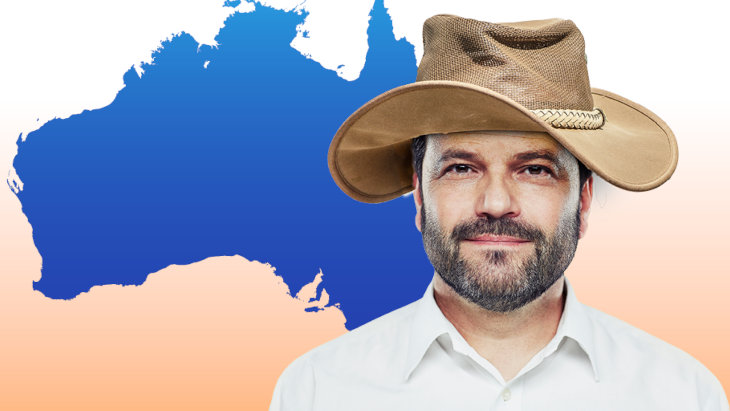
Jewish Geography

Jewish Geography
10 min read
How did Jews get to Australia?
I was born and raised in Melbourne, Australia and have an affinity for all things Australian, including Vegemite. I cannot help feeling that when the prophet Ezekiel said that Jews were dispersed and scattered among the nations, that he had Australia in mind. Isaiah predicted that the Jewish people would be exiled “to far off islands, which have not heard my fame, nor have they seen my glory…”1 and are there very many farther islands from Israel than Australia?
How did Jews get to Australia?
Basically, there have been five “waves” of immigration that have planted the seeds of the Australian Jewish community. Originally, England began to send convicts to Australia in the 18th century. Some of these convicts were violent criminals, many however were convicted of petty theft and minor crimes, which, in the British justice system were liable to a death sentence. Britain wanted to settle and colonize Australia and hence often commuted the death sentence and replaced it with transportation to Australia.
It is believed that on the First Fleet of convicts sent to Australia in 1788 there were possibly seven Jews. There are records of some of the Jewish convicts. In Hodgson’s Old Bailey Shorthand Reports there is a record of a certain Ikey Bull, or Isaac Simmonds, a Jew accused of violent assault and robbery. He was sentenced to death at age 32, but the hanging was unsuccessful, and he survived only to be sentenced to transportation to Australia.
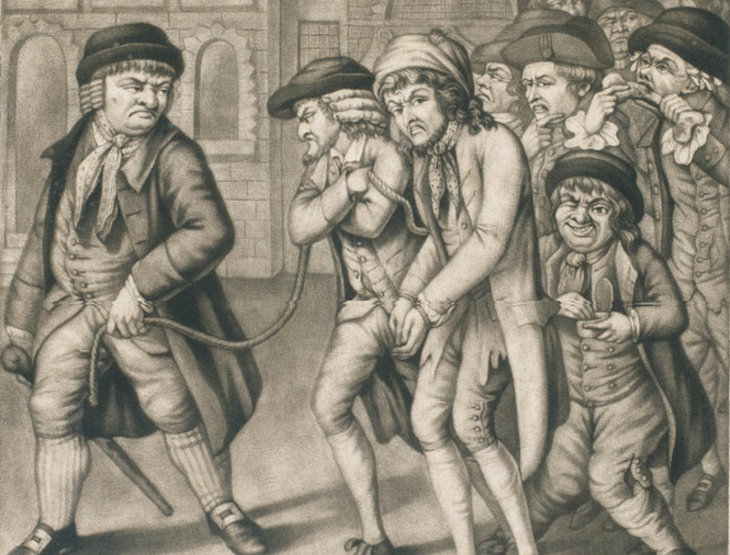 First Fleet of convicts, mezzotint print published by Carrington Bowles
First Fleet of convicts, mezzotint print published by Carrington Bowles
In the records of the London Beth Din (Rabbinical Courts)2 there are numerous cases of women and men asking for divorce from a spouse who was sentenced to transportation.3 One entry4 records the divorce of the transportee Joseph Stakilman and his wife Judith/Harriet at “Sheerness on the seacoast and the River Medway.” Most convicts who finished their sentence stayed in Australia and became free settlers. Interestingly, there was little or no discrimination against them either because of their criminal record or their religion. These freed convicts became businesspeople, politicians and respected members of society.5
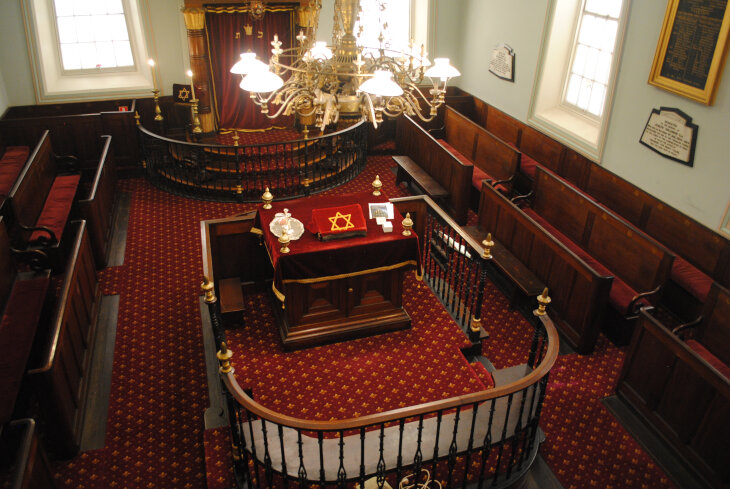 The Hobart Synagogue
The Hobart Synagogue
The oldest synagogue in Australia was built in 1845 in Hobart, Tasmania and has a fascinating history involving Jewish convicts. When the synagogue was completed, the government issued an instruction that “all prisoners of the Jewish persuasion” not actually under a sentence would have leave to refrain from work and attend services on the Sabbath. The Hobart Town congregation made provision for the convicts to receive two free Sabbath meals. It also sent an enquiry to the Chief Rabbi in London asking whether convicts could be counted as members of a minyan, and whether they could be called to the Torah. The responses were affirmative to the first question, and negative to the second.
#The Hobart synagogue is believed to be the only place of Jewish worship in the world with seats set aside for convicts.
The numbered benches originally at the back of the synagogue were for the use of convicts and the poor. The Hobart synagogue is thus believed to be the only place of Jewish worship in the world with seats set aside for convicts.6
 Sir John Monash during the First World War
Sir John Monash during the First World War
The second wave of immigration in the 18th and 19th centuries was a continuation of transportees but also included many free settlers who came to Australia from England and Europe in search of economic opportunity. One famous scion of 19th immigration was Sir John Monash. His parents arrived in Australia from Posen, Prussia in 1863 and he was born in Melbourne in 1865. Monash celebrated his Bar Mitzvah at the East Melbourne Hebrew Congregation, (where my parents, of blessed memory, were married) and went on to become an engineer and eventually joined the Australian army.
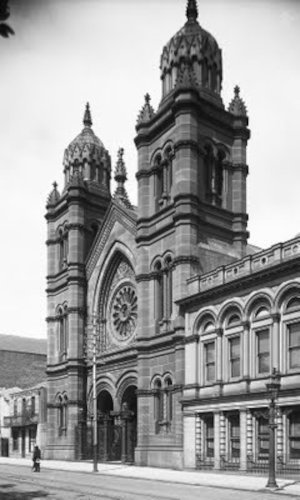 The Great Synagogue of Sydney
The Great Synagogue of Sydney
After various leadership positions during the First World War, in June 1918, he was promoted to lieutenant general and became commander of the Australian Corps, at the time the largest individual corps on the Western Front. Monash is considered to be one of the best Allied generals of the First World War and the most famous in Australian history and there is a university in Melbourne, Monash University, named after him.7
The next phase of Jewish immigration came in the mid-19th century as a result of the Australian gold rush. Many Jews from Eastern Europe and England came to Australia at the time, but most were not miners or prospectors. Jews usually made their livelihood, and some their fortunes, by selling supplies to miners. In fact, Melbourne was one of the wealthiest Jewish communities in the world at that time, and today there are magnificent synagogues in Melbourne, Sydney and Ballarat, all built using the wealth of the gold rush.
One of the most famous of the Jewish merchants was the Russian-born Simcha Baevski, better known as Sydney Meyer. His retail career started as a hawker in the Victorian countryside, but shortly after the turn of the century he established a retail store. When that store prospered he opened another store in Melbourne, which eventually developed into the biggest department store in Australia. Meyer’s is the Australian Macy’s, established by Simcha Baevski.8
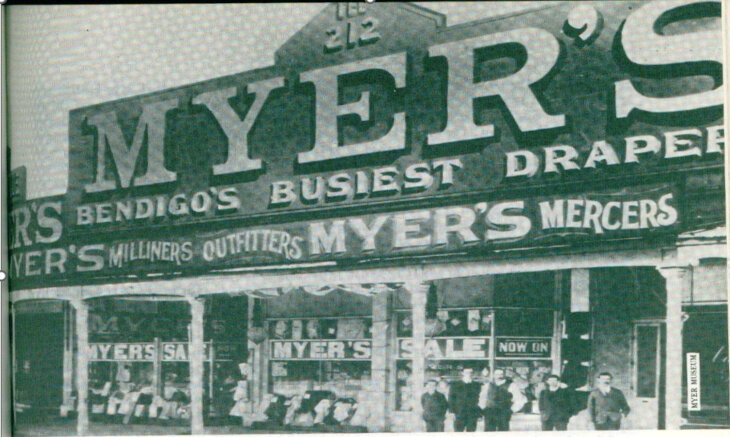 The Macy’s of Australia
The Macy’s of Australia
Before, during and mostly after the Second World War was when the majority of Australia’s Jews arrived, From the 1930s until the 1950s Jewish refugees from Europe settled in Australia. Sydney was the prime destination for German and Hungarian Jews and Melbourne, for Polish and Russian Jews.9 One of these refugees, a Holocaust survivor, by the name of Mendel Glick, established a bakery, founded in the late 1960s in a small retail shop on Kooyong Road Caulfield. In its early days, the shop offered a selection of cakes and biscuits until Mr. Glick revived an old European recipe and method for boiled bagels. The product was an instant sensation and word quickly spread throughout the Jewish community. Local milk-bars and delis sought a piece of the action too.
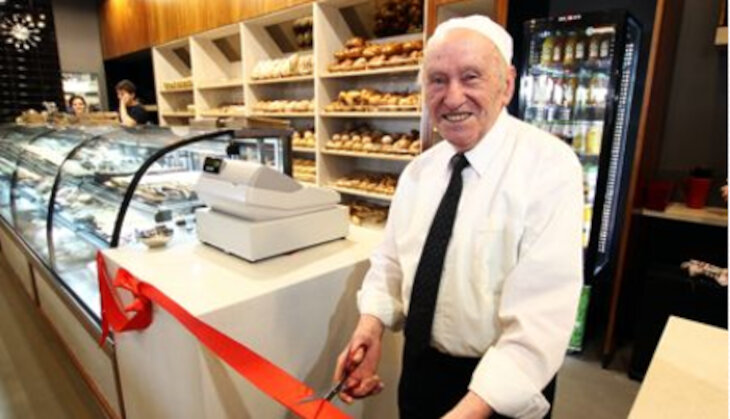 Mendel Glick
Mendel Glick
Many shopkeepers recognized the bagel’s appeal, particularly with the development of Sunday trading. The Glick’s bagel began to replace other bread items in many homes and Melbourne eateries and is now a popular food item, with branches of Glick’s Bagels throughout Australia.10
One of the most fascinating stories of Australia’s Jews is that of the Dunera. During the Second World War Jewish refugees from Germany who escaped to England were arrested as “enemy aliens” and many were deported to internment camps in Australia. On 10 July 1940, 2542 detainees were embarked aboard the Hired Military Transport (HMT) Dunera at Liverpool bound for Australia.
 The Dunera
The Dunera
Among the group were 450 German and Italian prisoners of war and a few dozen fascist sympathizers, but the vast majority of the deportees were anti-fascist and two-thirds were Jewish.
The treatment of internees on board the transport was appalling. The 309 poorly trained and led soldiers on guard stole possessions and documents, many of which were thrown overboard. Internees were allowed above decks into the fresh air for only 30 minutes a day. With only 10 toilets for more than 2500 men, human waste flowed across the decks.
Internees were beaten and verbally abused. Klaus Wilcynski recalls that soldiers smashed beer bottles on the deck and forced the internees to walk across the broken glass barefoot.
Their treatment was so poor that the British Government eventually agreed to pay £35,000 in compensation to the group. Three of the guards, including officer-in-charge Lieutenant-Colonel William Scott, were court martialed.11
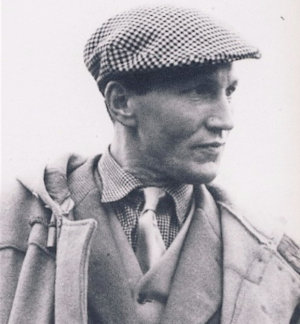 Franz Stampfl
Franz Stampfl
A German submarine commander, captain of the U-56, Oberleutnant Harms, describes firing two torpedoes at the Dunera, one missing, the other failing to explode. Many of the Jews deported to Australia remained there and became citizens. Among those on the Dunera were Franz Stampfl, who helped coach the athlete Roger Bannister to the world's first sub-four-minute mile and Anton Walter Freud, grandson of psychoanalyst Sigmund Freud.12 Another became a Talmud instructor in Yeshiva College, the Chabad high school in Melbourne that I attended.
Two of Australia’s governor generals, the British sovereign’s highest representative in Australia have been Jewish: Sir Isaac Alfred Isaacs and Sir Zelman Cowen. The treasurer of the previous government in Australia was a traditional Jew, Joshua Frydenberg, who took his oath of office on a Jewish Bible, wearing a yarmulka.
Today, there are synagogues, Jewish day schools, kosher restaurants, bakeries and supermarkets, advanced Talmudic academies, Yeshivas and Kollels in Melbourne and Sydney, and one can encounter shtreimel-wearing Chassidim with broad Australian accents. The Jewish community of Australia numbers about 112,000 and is only about 0.4% of the total Australian population. Australia’s Jews include Rabbi Marcus Solomon of Perth, who is an Australian Supreme Court justice; and Australia’s eighth casualty in Afghanistan, Gregory Michael Sher, a Jewish private in the 1st Commando Regiment, Australian Special Operations Command. The grandfather of the famous Australian singer Olivia Newton-John was Jewish, and the singer Helen Reddy, famous for her song, “I am Woman” was a convert to Judaism, as is the Pulitzer Prize-winning Australian author Geraldine Brooks. Sorry, Russell Crowe, despite our incredible similarities, is not Jewish. Neither is Nicolle Kidman.

One of the wealthiest Australians, and a great philanthropist, is Joseph Gutnick, known as “Diamond Joe,” who made a fortune by investing in mining and minerals on the advice of the Lubavitcher Rebbe, Menachem Mendel Schneerson. Joseph Gutnick is an ordained Rabbi, his father and uncle were Rabbis of two of the largest synagogues in Melbourne, his brothers, cousins and nephews are also Rabbis in Australia.
In addition to an extensive network of synagogues, schools, and Chabad houses, Chabad has something unique to Australia: Chabad of RARA, Rural and Regional Australia. It consists of two dedicated young men who traverse the outback and the countryside in a camper van, contacting Jews scattered throughout the vast continent.
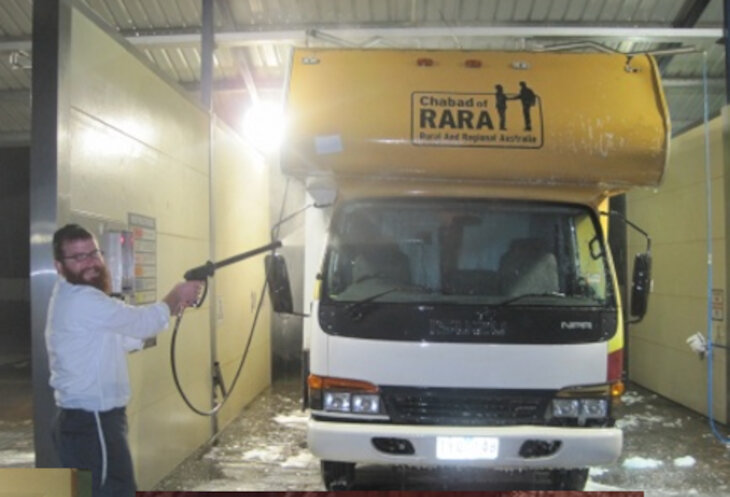
Although by all accounts the Australian Jewish community is one of the most isolated and distant communities in the world, it is nevertheless, culturally, spiritually and historically firmly connected to Jews, Judaism and Jewish history. It is a testimony to the vibrancy, passion and depth of Jewish tradition that has kept the Australian Jewish heart beating. Convicts, gold miners, peddlers and refugees became artists, soldiers, politicians, businesspeople and intellectuals and turned, in Isaiah’s words, “the far-off island” into the Southern Chosen.

Thank you so much for posting this article. I am very blessed to read this. Having grown up in Brisbane from the age of 8 until 20, I didn't know anything about the Jewish community. My family was not Jewish and in fact I had never met a Jewish person at all to my knowledge. Sadly, in the 60's and 70's, the Jewish people were the recipients and butt of all the derogatory jokes:(
As I grew into adulthood, and moved to the USA I was so glad to meet Jewish people for the first time. I had come to know the G-D of Abraham, Issac and Jacob... and I love the Scriptures!
Then, upon reflection, I think that two of my friends in highschool were Jewish, simply from their physical characteristics. Just a guess...:)